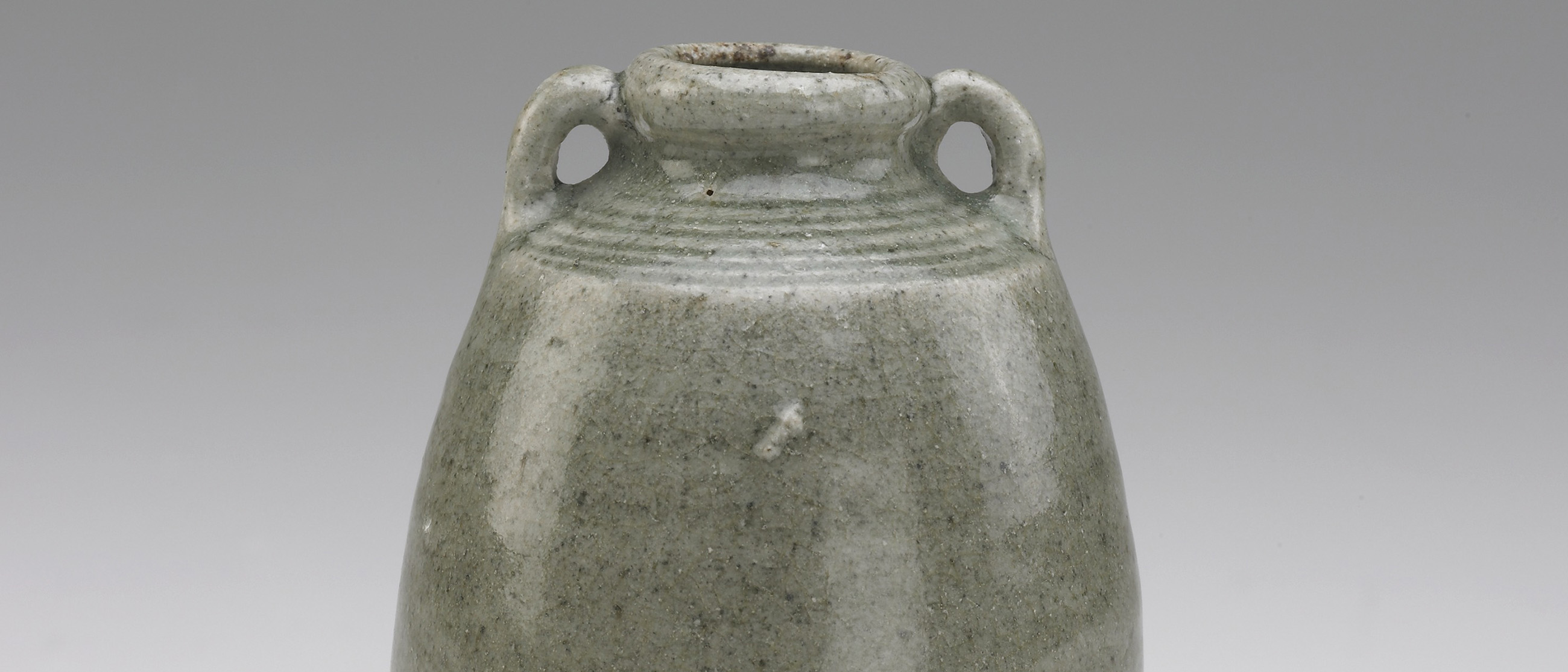GREEN GLAZE
View all related objects in the collections
Green glaze (broadly termed “celadon”) was the first to be used at kilns making stoneware in Mainland Southeast Asia—specifically at those operating in North Vietnam during the first and second centuries (Truong 1997). On some wares in the form of Chinese bronze ritual vessels, intentional drops of glaze on the otherwise unglazed body imitate a practice also followed on Han stonewares (Kerr and Wood 2004, 463).
Glaze with a greenish tonality is a natural result of a simple mixture of plant ash and clay, both of which contain small quantities of iron oxide. The color is intensified when the glaze is fired in a smoky, oxygen-depleted atmosphere—the natural firing tendency of the crossdraft kiln widely used in Mainland Southeast Asia. The green glazes on Angkor-period stoneware, on early (MON) ware at Sawankhalok, and on objects manufactured at various kilns in North Thailand are of this type, with distinctive variations in color that reveal differences in local raw materials. (Potters at kilns in Thailand enhanced the green glaze by applying it over white slip.) Green glaze on vessels from the kilns in the Champa kingdoms in Central Vietnam and from the Irrawaddy Delta kilns in Burma also display a wide range of hue.
Potters could achieve a more evenly and intensely colored green glaze by controlling both the glaze composition and the firing procedures and by using a whiter-firing clay body. Imports of attractive celadon-glazed stonewares from kilns in Zhejiang province surely provided an incentive to do so. The popularity of green-glazed wares is reflected at Red River Delta kilns during the thirteenth and fourteenth centuries (Lam 1997) and at Sawankhalok kilns during the fifteenth century, which Roxanna Brown terms the “classic celadon” era (Brown 2004). To take the Sawankhalok kilns as an example, the greenish glaze on early MON ware bowls contains an average of 2.5 percent iron (Fe2O3), while the later celadon glaze contains 1.2 percent iron (Hein 2001, 293 and 295).

